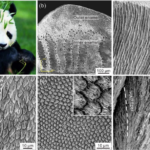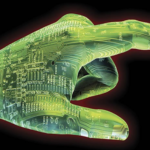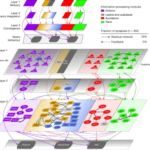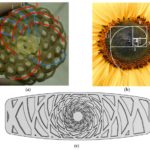Abstract: The giant panda’s teeth possess remarkable load-bearing capacity and damage resistance for masticating bamboos. In this study, the hierarchical structure and mechanical behavior of the giant panda’s tooth enamel were investigated under indentation. The effects of loading orientation and location on mechanical properties of the enamel […]
Most robotic parts used today are rigid, have a limited range of motion and don’t really look lifelike. Inspired by both nature and biology, a scientist from Florida Atlantic University has designed a novel robotic finger that looks and feels like the real thing. In an article recently published in the […]
Ants react to social isolation in a similar way as do humans and other social mammals. A study has revealed alterations to the social and hygienic behavior of ants that had been isolated from their group. The research team was particularly surprised by the fact that immune and stress genes were […]
Based on a study of both hatchling sea turtles and “FlipperBot” — a robot with flippers — researchers have learned principles for how both robots and turtles move on granular surfaces such as sand.
Abstract: To safely land after different drops, cats can perfectly use their limbs as dampers to dissipate impact forces. Yet, we know little about the contribution of the forelimbs and hindlimbs of cats to attenuating the impact forces during landing. In order to investigate this, we analyzed […]
News, How the Brainless Slime Mold Stores Memories
Slime molds, which are not actually fungi but cousins of single-celled amoebas, are goopy organisms that can find their way through a maze and remember the location of food—all without the benefit of a brain or nervous system. Now, new research brings us a step closer to understanding how exactly these […]
News, Scientists map the brain of a nematode worm
Researchers have mapped the physical organization of the brain of a microscopic soil-living nematode worm called Caenorhabditis elegans, creating a new model for the architecture of the animal’s brain and how it processes information. The scientists say the worms’ brains might have a lot more in common […]
For engineers, polar bear hair is a dream template for synthetic materials that might lock in heat just as well as the natural version. Now, materials scientists have developed such an insulator, reproducing the structure of individual polar bear hairs while scaling toward a material composed of many hairs for real-world […]
Modeling and analyzing the sports equipment for injury prevention, reduction in cost, and performance enhancement have gained considerable attention in the sports engineering community. In this regard, the structure study of on-water sports board (surfboard, kiteboard, and skimboard) is vital due to its […]
NYT News Article: How Suckerfish Surf Across Blue Whales Without Falling Off (https://www.nytimes.com/2020/10/29/science/remoras-suckerfish-whales.html) [Dr. Flammang] has been developing an artificial suction disk inspired by the remora’s, which she hopes will eventually be able to be used to better stick […]
Learn about our two Decals!
 Click here to find out more about our Fall Bioinspired Design Decal and our Spring Bioinspired Design in Action Decal – ALL MAJORS are welcome.
Click here to find out more about our Fall Bioinspired Design Decal and our Spring Bioinspired Design in Action Decal – ALL MAJORS are welcome.Berkeley BioDesign Community
 Click here to learn about the BioD: Bio-Inspired Design @ Berkeley student organization or here to signup for more info.
Click here to learn about the BioD: Bio-Inspired Design @ Berkeley student organization or here to signup for more info.Search
Student Login












I imagine that the neurological circuits underlying these processes are governed by both 2d spacing maps with their brains as…
to reduce the impact of car accidents, it may be possible to study the force diverting physics of cockroaches to…
you see this type of head-bobbing stability in many avian creatures related to pigeons like chickens. the head ability to…
not like they taught horses how to run! this is an example of convergent evolution where both sea creatures and…
The brain functions in a similar way with neuronal connections. our brains are able to utilize the multiplicity of connections…